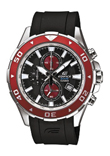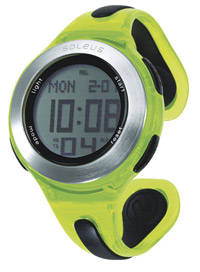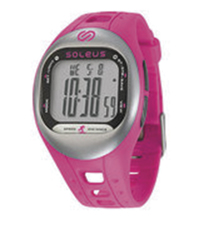By IvyLee Rosario
 Expanding your retail merchandise always comes with the same set of questions: what do I want to sell next and how do I begin selling those items? In order to assist our readers in reaching their highest selling potential, Independent Retailer created a monthly series called “Beyond Your Lines.” Here we provide you with the best tips from experts in their selling categories on how to grow your business, what to expect from the merchandiser and what they will require from you, to ensure an effective and efficient exchange. Continuing our segment will be Larry Whittaker, Operations Manager of Watch Wholesalers, who will shed some light on what it takes to begin selling our fifth category item: watches.
Expanding your retail merchandise always comes with the same set of questions: what do I want to sell next and how do I begin selling those items? In order to assist our readers in reaching their highest selling potential, Independent Retailer created a monthly series called “Beyond Your Lines.” Here we provide you with the best tips from experts in their selling categories on how to grow your business, what to expect from the merchandiser and what they will require from you, to ensure an effective and efficient exchange. Continuing our segment will be Larry Whittaker, Operations Manager of Watch Wholesalers, who will shed some light on what it takes to begin selling our fifth category item: watches.
Getting Started:
The topic of watches may seem broad with the array of brand names to choose from, but this way it will give you a chance to really think about what kinds of watches should be sold at your specific store. From Casio and Timex, to Sector and Columbia, the category of watches is not a simple one. So, with the help of our expert, the must know information on selling watches will be right at your fingertips. There are several ways of going about purchasing new merchandise, but take into account these tips while growing your store.
 If you do not know what product variety to get started with, aim for brand names that customers will know. “Choose brands that have been around for decades,” said Whittaker, “ones that customers will be looking for and like to see. If these brand names are well known in the market, then there will always be customers looking to buy them.” When searching for a reputable supplier, make sure you do your homework and look for companies that have been in the business “for twenty plus years,” that way you will know they have experience and will constantly be looking out for your stores best interest. Whittaker also says to look for manufacturers that deal directly with main vendors, and ones that are always getting the newest models in, That way, your store will always have the most popular trending watches.
If you do not know what product variety to get started with, aim for brand names that customers will know. “Choose brands that have been around for decades,” said Whittaker, “ones that customers will be looking for and like to see. If these brand names are well known in the market, then there will always be customers looking to buy them.” When searching for a reputable supplier, make sure you do your homework and look for companies that have been in the business “for twenty plus years,” that way you will know they have experience and will constantly be looking out for your stores best interest. Whittaker also says to look for manufacturers that deal directly with main vendors, and ones that are always getting the newest models in, That way, your store will always have the most popular trending watches.
Mistakes to Avoid:
There will always be common mistakes and misconceptions retailers have when upsizing their merchandise. Here are a few to avoid and ways to correct them.
 When looking to expand their product line, many buyers tend to think that once they put the product out onto the shelves it will sell automatically, but that is not the case. “So many retailers do not take out the time to really get to know the product,” said Whittaker. “Especially showing your staff and making them knowledgeable to help the customers looking for these products.” With so many high-technology upgrades being used in watches, retailers and staff members should know how to operate each piece correctly and should be able to convey that to the customers. “These people will end up with phone calls from customers saying ‘the watch is not working,’ then when they get the item back it is in perfectly good condition. It all has to do with the fact that the staff did not show the customer how to properly use it, so they think it is broken.”
When looking to expand their product line, many buyers tend to think that once they put the product out onto the shelves it will sell automatically, but that is not the case. “So many retailers do not take out the time to really get to know the product,” said Whittaker. “Especially showing your staff and making them knowledgeable to help the customers looking for these products.” With so many high-technology upgrades being used in watches, retailers and staff members should know how to operate each piece correctly and should be able to convey that to the customers. “These people will end up with phone calls from customers saying ‘the watch is not working,’ then when they get the item back it is in perfectly good condition. It all has to do with the fact that the staff did not show the customer how to properly use it, so they think it is broken.”
Another big hiccup that plagues retailers is not keeping proper inventory of their products. “We have a system called a CSV file that each retailer that works with us has access to. There you can read item descriptions, see images and control shipments and inventory,” said Whittaker. “The problem starts when the retailer does not constantly check their inventory and relay that information over to us. If they do not keep up with the system then they will not be able to get the products they need from us.”
Keep in Mind:
Now that we have provided the tools and expertise on the watch industry, it is up to you, the retailer, to go out and decide if this is the right merchandising step for you. Remember these tips when on your journey to retail growth:
• Selling name brands will help get your foot in the door
• Make sure both the staff and owner are knowledgeable about the products being sold in the store
• Make sure to take inventory everyday to ensure you are able to get the products you need on time
• Be careful when placing orders, calculating the correct shipping amount can make or break your budget
• Remember seasonality: plan 60 to 90 days worth of inventory in advance for holidays and seasons with the most orders
